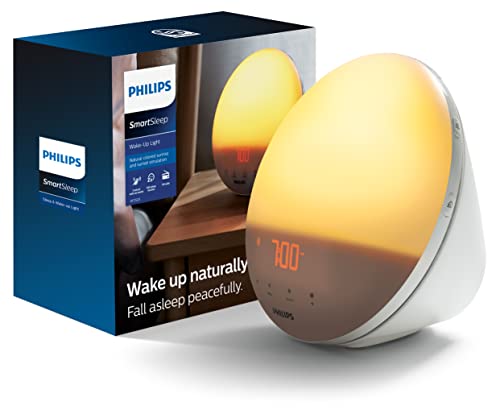Disclosure
This website is a participant in the Amazon Services LLC Associates Program, an affiliate advertising program designed to provide a means for us to earn fees by linking to Amazon.com and affiliated sites.
Introduction
Is your child struggling to shift back into a school sleep schedule after a long summer break? You’re not alone—and yes, there’s a better way than last-minute bedtime battles.
Back-to-school season doesn’t just mean new supplies and routines; it also demands a major shift in your child’s sleep habits. According to the American Academy of Pediatrics, school-aged children need 9 to 12 hours of sleep per night—but few actually get that during transitional periods. That’s where intentional sleep scheduling becomes essential.
The good news? With just a bit of planning, you can ease the transition and help your child wake up refreshed and focused from day one. In this guide, we’ll walk you through the 7 best, science-backed tips for resetting your child’s sleep routine—without the fuss. You’ll also find trusted product recommendations to support healthy sleep habits.
Best Sleep Products for Back-to-School Routines
When it comes to re-establishing a healthy sleep schedule for your child, the right tools can make all the difference. From smart sleep aids to gentle sound machines, these trusted products support bedtime consistency, reduce anxiety around lights-out, and create a calming environment—perfect for kids adjusting back to early school mornings.
Here are the top 3 products we recommend:
1. Hatch Rest+ 1st Gen All-in-One Sleep Machine
- Updated Wi-Fi 2nd Gen version of this product is also available for the same…
- Sound machine. Keep your little one dreaming with sounds like white noise, wind,…
- Night light. Make midnight feedings soothing and the dark less scary with a…
Why we picked it:
This all-in-one sleep device offers a customizable night light, sound machine, and time-to-rise alert—all controllable via smartphone. It helps children visually and audibly understand when it’s bedtime or wake time, which is especially effective for younger kids.
2. Philips SmartSleep Wake-Up Light
- PERSONALIZED WAKE-UP AND WIND-DOWN: Simulated sunset and sunrise, 20 brightness…
- SMART FEATURES: FM radio, tap snooze, bedside lamp, and automatic dimmable…
- MOOD AND ENERGY: Proven to give you an easy and energetic wake-up and improve…
Why we picked it:
This wake-up light simulates a natural sunrise to wake your child gently, helping reset their internal clock. The gradual light and soothing sounds support a calm, non-jarring start to the school day.
3. Yogasleep Hushh Portable White Noise Machine
- EFFECTIVELY MASKS NOISE: Beloved by generations since 1962, Yogasleep is the…
- SOOTHING SOUNDS & NIGHT LIGHT: Take control of your sound environment and choose…
- COMPACT & PORTABLE: Designed for life on the go, the Hushh is the perfect travel…
Why we picked it:
Lightweight and travel-ready, this white noise machine blocks out household and environmental noise, creating a consistent sleep setting. It’s ideal for both bedtime routines and maintaining sleep through the night.
Start the Transition Early
One of the most effective ways to get your child back on a school sleep schedule is to start the transition at least 1–2 weeks before school begins. Shifting bedtime overnight simply doesn’t work—kids need time to adjust their internal clocks gradually.
Why early transitions matter:
- Children’s circadian rhythms adapt slowly to new sleep times.
- Sudden changes can result in sleep resistance, crankiness, and morning fatigue.
- A gradual transition helps reduce stress—for both the child and the parent.
How to ease into the new schedule:
Move bedtime earlier in 15-minute increments.
Do this every night until you reach the desired school-night bedtime.
Wake them up earlier each morning.
As you shift bedtime earlier, make sure wake-up times also follow suit.
Maintain consistent sleep and wake times—even on weekends.
Avoid “catch-up sleep” as it confuses the body’s internal clock.
Use natural light strategically.
Expose your child to morning sunlight to help reset their circadian rhythm. Keep evenings dim to signal wind-down time.
Establish a bedtime routine during the transition.
Begin practicing the routine you plan to use during the school year:
- Bath
- Pajamas
- Storytime
- Lights out
Set a Consistent Sleep-Wake Schedule
Once the school year starts, one of the most powerful tools you have to support your child’s sleep is consistency. Children thrive on routine—especially when it comes to sleep. A predictable schedule reinforces the body’s natural sleep-wake cycle, improving both the quantity and quality of rest.
Benefits of a consistent schedule:
- Regulates the body’s internal clock (circadian rhythm)
- Reduces bedtime resistance and nighttime waking
- Improves attention span, mood, and academic performance
How to create a school-year sleep schedule:
Set a fixed bedtime and wake-up time—even on weekends.
Avoid more than a one-hour difference on weekends. Sleeping in too much can undo progress made during the week.
Anchor the wake-up time first.
Focus on getting your child up at the same time every morning, even if bedtime isn’t perfect yet—wake time consistency helps bedtime naturally fall into place.
Create evening wind-down rituals.
Make bedtime something to look forward to with calm, repetitive activities:
- Reading a book
- Listening to soothing music
- Taking a warm bath
- Practicing deep breathing
Keep after-school activities in balance.
While extracurriculars are great, avoid overbooking evenings to preserve enough time for rest.
Make mornings predictable too.
Start the day with light exposure, breakfast, and a calm, structured routine. This sets a stable 24-hour rhythm.
Limit Screen Time Before Bed
One of the most common sleep disruptors for children—and adults—is screen time before bed. Tablets, smartphones, TVs, and even e-readers emit blue light, which interferes with the production of melatonin, the hormone that helps the body wind down for sleep.
If your child is struggling to fall asleep or stay asleep, evening screen time might be the culprit.
Why screen time affects sleep:
- Suppresses melatonin production
Blue light tricks the brain into thinking it’s still daytime, delaying sleepiness. - Increases alertness
Watching action-packed shows or playing games stimulates the brain, making it harder to relax. - Delays bedtime
Screen time can be so engaging that kids resist turning off devices—leading to “bedtime battles.”
Smart strategies to reduce screen use at night:
Set a digital curfew.
Turn off all screens at least 60 minutes before bedtime. This allows the body to naturally begin winding down.
Replace screens with calming alternatives:
- Read a physical book
- Listen to calming music or sleep stories
- Do simple stretches or deep breathing
Use tech settings wisely.
Enable Night Shift, Blue Light Filter, or Dark Mode on devices if your child must use them in the evening.
Keep screens out of the bedroom.
Create a charging station in the living room or kitchen and make bedrooms screen-free zones.
Model good habits.
Children mimic adults. Practicing your own screen boundaries can encourage them to follow suit.
Create a Calming Bedtime Routine
A consistent, calming bedtime routine is a powerful signal to your child’s brain that it’s time to wind down and prepare for sleep. Routines reduce bedtime resistance, lower anxiety, and help kids fall asleep faster and stay asleep longer.
Whether your child is starting kindergarten or entering middle school, routines work because they build predictability—and kids thrive on that.
Why a bedtime routine matters:
- Triggers the body’s natural sleep response
- Reduces cortisol levels (the stress hormone)
- Helps kids transition from play mode to rest mode
Steps to a soothing bedtime routine:
Start your child’s routine 30–45 minutes before lights out and keep it consistent each night.
Wind-down time (20–30 mins):
- Turn off screens
- Dim the lights
- Put on pajamas
Quiet bonding time (10–15 mins):
- Read a favorite book together
- Share something positive about the day
- Practice gratitude or say affirmations
Relaxation cues (5–10 mins):
- Use lavender-scented lotion or a warm bath
- Try guided breathing exercises (4-7-8 method is great for kids)
- Turn on a white noise machine or soft music
Optimize the Sleep Environment
Your child’s bedroom can either support restful sleep—or quietly sabotage it. A sleep-friendly environment removes distractions, reduces anxiety, and sets the stage for deeper, more restorative rest. It’s not about perfection, but about creating a calm, consistent space that cues the brain: it’s time to sleep.
Why the environment matters:
- Helps children fall asleep faster and stay asleep longer
- Reduces wake-ups caused by noise, light, or discomfort
- Supports emotional security and routine
How to create a sleep-optimized bedroom:
Control light exposure:
- Use blackout curtains to block outdoor lights
- Install a soft, warm night light if your child needs it for comfort
- Dim lights during the bedtime routine to help melatonin rise
Set the ideal temperature:
- Keep the room cool—around 65–70°F (18–21°C) is ideal for sleep
- Dress your child in breathable sleepwear to prevent overheating
Reduce noise disruptions:
- Use a white noise machine like Yogasleep Hushh to block out background sounds
- Close windows and doors to minimize environmental noise
Remove distractions:
- Keep toys, electronics, and clutter out of the bed
- Ensure the bed is used primarily for sleep—not play or screen time
Create a cozy sleep zone:
- Choose comfortable bedding in calming colors
- Let your child help pick out pillows or sheets—it gives them ownership and comfort
Conclusion
Helping your child return to a healthy back-to-school sleep schedule doesn’t have to be a nightly struggle. With a little preparation, consistency, and the right support tools, you can create a smooth and stress-free transition that sets your child up for success—both in and out of the classroom.
Let’s recap the 7 key strategies:
- Start the transition early
- Set a consistent sleep-wake schedule
- Limit screen time before bed
- Create a calming bedtime routine
- Optimize the sleep environment
- Use helpful sleep tools like white noise and wake-up lights
- Communicate and involve your child in the process
Frequently Asked Questions About Back to School Sleep Schedules
Navigating your child’s back-to-school sleep routine can raise a lot of questions. Below are the most common concerns parents have—answered with clarity and expert-backed advice.
When should I start adjusting my child’s sleep schedule for school?
- Ideally, begin 10–14 days before school starts.
- Gradually shift bedtime and wake-up time by 15 minutes each day until you reach the desired schedule.
What time should my child go to bed?
- It depends on age, but generally:
- 5–8 years old: 7:00–8:00 PM
- 9–12 years old: 8:00–9:00 PM
- Ensure your child gets the recommended 9–12 hours of sleep.
How can I tell if my child isn’t getting enough sleep?
Watch for these signs:
- Morning crankiness or difficulty waking
- Hyperactivity or trouble focusing
- Frequent illness or fatigue
- Falling asleep outside of bedtime (e.g., in the car)
What if my child insists on screen time before bed?
- Offer screen-free alternatives like reading, coloring, or audio stories.
- Set a consistent “no screen” rule 60–90 minutes before bedtime.
- Use parental control apps or device settings to manage access.
Should I wake my child up if they sleep in on weekends?
- Yes, within reason. Try to keep weekend wake-up times within 30–60 minutes of the weekday schedule to avoid throwing off their rhythm.
Do bedtime routines really work?
Absolutely. A structured bedtime routine signals to the brain that it’s time to sleep. Kids fall asleep faster, wake up less, and feel more secure.
Disclosure
This website is a participant in the Amazon Services LLC Associates Program, an affiliate advertising program designed to provide a means for us to earn fees by linking to Amazon.com and affiliated sites.



